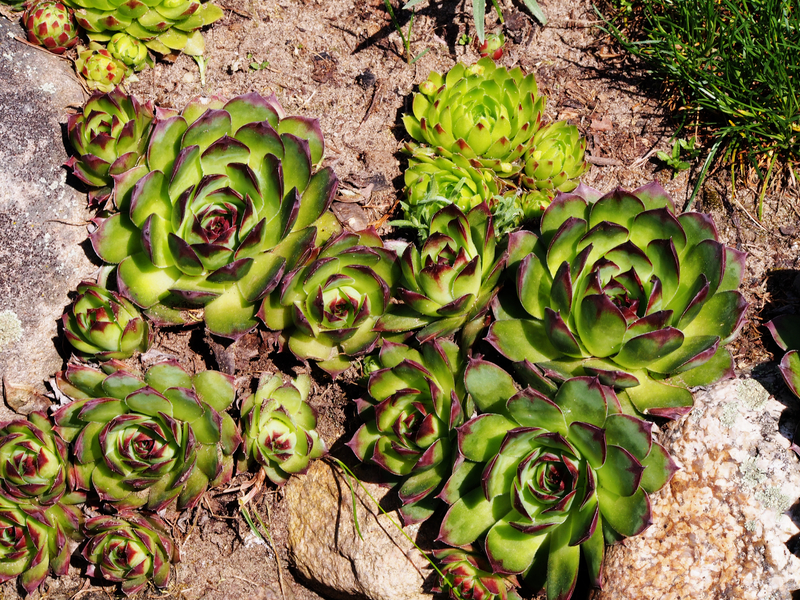Rediscovering Soil Fertility through Organic Waste Innovations
Posted on 18/09/2025
Rediscovering Soil Fertility through Organic Waste Innovations
The ongoing challenges of soil degradation, declining crop yields, and environmental concerns have pushed farmers, researchers, and sustainable living advocates to look for innovative ways to restore soil fertility. Among the most promising solutions are the advancements in utilizing organic waste to rejuvenate and maintain soil health. This article delves deep into rediscovering soil fertility through organic waste innovations, exploring modern approaches, their benefits, and how you can implement them for a healthier planet and more productive fields.

Why Soil Fertility Matters More Than Ever
Soil is much more than dirt; it's a living, dynamic ecosystem. The fertility of soil--the ability to support plant growth--determines the quality and quantity of our food supply. Yet, modern agricultural practices, including excessive tillage and chemical fertilizer usage, have significantly reduced organic matter in soils, leading to:
- Decreased crop yields
- Poor soil structure and increased erosion
- Loss of essential nutrients and biodiversity
- Leaching and contamination of water sources
Rediscovering soil fertility means going back to nature-inspired cycles--where organic waste is not discarded but returned to the earth, enabling regeneration from the ground up.
The Importance of Organic Waste in Soil Restoration
Organic waste includes all biodegradable residue from agriculture, kitchens, gardens, and food processing industries. This material, often treated as useless, is a rich source of nutrients, organic carbon, and beneficial microbes essential for revitalizing soil. By implementing innovative organic waste management and recycling methods, we can transform waste into a powerful asset for eco-friendly soil care.
Traditional Organic Waste Methods
Historically, farmers have practiced returning crop residues, animal manure, and composted materials to their fields. However, rapid urbanization and industrialization have disrupted these cycles. Today, many organic waste products end up in landfills or are burned, contributing to greenhouse gas emissions rather than building soil fertility.
The rediscovery lies in not only reviving old practices but embracing new organic waste innovations tailored to present-day challenges.
The Science: How Organic Waste Restores Soil Health
Key Components of Soil Fertility
- Organic Matter: Improves soil structure, water retention, and nutrient supply.
- Microbial Life: Breaks down organic materials, enhancing nutrient cycling.
- Macronutrients & Micronutrients: Essential for healthy plant growth.
When organic waste is added back to the soil, its decomposition releases nutrients and stimulates microbial activity. This increases soil aeration, structural stability, and nutrient availability for plants, while also sequestering carbon and mitigating climate change impacts.
Organic Waste Innovations Transforming Soil Fertility
The traditional compost heap has evolved into a suite of high-tech, efficient, and scalable solutions, each optimized to return life to tired soils. Here are the main organic waste innovations reshaping agriculture and gardening today:
1. Advanced Composting Techniques
- Vermicomposting: Utilizes earthworms to accelerate the breakdown of food and green waste, producing nutrient-rich worm castings.
- Aerated Static Pile (ASP) Composting: Speeds up composting by mechanically supplying air, reducing odors and labor intensity.
- Bokashi Fermentation: A Japanese method using beneficial microbes to ferment organic materials, preserving more nutrients and allowing for the inclusion of meat and dairy waste.
2. Biochar Integration
Biochar, a stable form of carbon from pyrolyzed organic waste, boosts soil fertility by enhancing microbial life, increasing moisture retention, and locking carbon in the ground for centuries. Farmers and gardeners worldwide have adopted biochar amendments for more resilient crops and improved soil health.
3. Anaerobic Digestion & Digestate Utilization
Organic waste, when processed in anaerobic digesters, produces biogas and a nutrient-rich by-product called digestate. This digestate serves as a potent organic fertilizer, loaded with readily available plant nutrients. It closes the loop by combining clean energy production with soil enrichment.
4. Circular Urban Agriculture Approaches
- Community Composting: Brings together neighborhood food waste to create shared compost, supporting local gardens and green spaces.
- Vertical Farms and Hydroponic Systems: Use post-harvest plant residues and food waste to supplement nutrient solutions, demonstrating urban resource circularity.
Economic and Environmental Benefits of Soil Fertility Through Organic Waste
- Reduced Reliance on Chemical Fertilizers: Organic residues decrease the need for synthetic inputs, saving money and reducing environmental runoff.
- Improved Yields and Crop Quality: Healthier soils mean more resilient plants and better-tasting, more nutritious produce.
- Carbon Sequestration: Returning organic waste to soil locks away carbon, helping mitigate global warming.
- Waste Reduction: Diverts kitchen scraps, yard trimmings, and agricultural byproducts from landfills.
- Greater Biodiversity: A living soil is home to billions of microorganisms and insects that provide natural pest control and promote plant health.
Case Studies: Rediscovering Soil Fertility in Action
Sikkim, India: 100% Organic State
The Indian state of Sikkim transitioned all of its farmland to organic production, banning chemical fertilizers and relying exclusively on composted organic waste, green manures, and animal residues. Crop yields remained stable, soil fertility improved, and the state's produce now commands premium prices.
Netherlands: Urban Agriculture & Compost Innovation
Dutch urban farms employ high-efficiency compost systems that process food waste from local markets and restaurants. This results in ultra-local, circular food systems, where waste becomes productivity, closing urban nutrient loops.
How to Start Restoring Soil Fertility with Organic Waste Innovations
Whether you manage a farm, a backyard, or a balcony garden, anyone can put organic waste advances to work. Here's how to begin:
- Audit Your Organic Waste Streams: Identify kitchen scraps, garden trimmings, and local biodegradable wastes that could be recycled.
-
Select the Best Waste Conversion Method:
- For small households, try bokashi bins, worm composters, or home composter units.
- For farmers, consider adopting large-scale aerobic or anaerobic composting systems.
- Apply Finished Compost or Digestate to Soil: Spread mature compost or digestate during planting, mulching, or even as a top-dressing for lawns and orchards.
- Monitor Results: Observe improvements in plant vigor, yield, and soil texture--often noticeable after just one season.
- Close the Loop: Encourage neighbors, schools, and community groups to contribute their organic waste and share in the benefits.
Tips for Maximizing Soil Fertility with Organic Waste
- Diversify Inputs: Mix a variety of organic residues (leaf litter, food scraps, manure) for a broader nutrient profile.
- Encourage Microbial Activity: Avoid turning compost too frequently; allow worms and bacteria to do the work.
- Prevent Contamination: Never add plastics, metals, or diseased plants to compost bins or soil.
- Test Your Soil: Regular soil testing ensures that nutrients and pH remain in optimum balance after organic amendments.
The Future of Soil Fertility: Looking Ahead
The movement toward soil fertility restoration through organic waste innovations is gaining momentum worldwide. Cutting-edge research in microbiology, waste valorization, and regenerative agriculture is continuously unlocking new tools for both urban and rural settings. Technologies such as precision composting, microbial inoculants, and biogas digesters are making it easier--even profitable--to turn waste into wealth.
Policy and Community Action are critical. Cities and countries are increasingly setting targets for organic waste recycling, investing in infrastructure, and offering incentives for soil restoration. Grassroots organizations, educational campaigns, and farmer-to-farmer knowledge exchanges are spreading best practices globally.
Challenges and Opportunities
- Contamination Risks: Ensuring organic waste streams are free of chemicals or non-biodegradable contaminants is crucial.
- Scaling Solutions: Urban settings require different approaches than rural ones, but both offer ample opportunities for innovation and collaboration.
- Education: Ongoing training and awareness can accelerate adoption and success rates of organic soil fertility practices.

Conclusion: Embracing the Organic Waste Revolution for Soil Health
As we stand at the crossroads of agricultural sustainability, rediscovering soil fertility through organic waste innovations offers a hopeful path forward. By closing nutrient loops, enriching soils naturally, and minimizing waste, these practices blend ancestral wisdom and cutting-edge technology. Every gardener, farmer, policymaker, and citizen has a stake in this revival. The more we invest in turning organic waste into a resource--rather than a problem--the healthier our soils, food systems, and planet will be.
Let's collectively make organic waste the backbone of fertile soils worldwide, revitalizing the natural cycles that sustain us all.
Frequently Asked Questions About Soil Fertility & Organic Waste
- What is the best organic waste for soil restoration?
A mix of green materials (vegetable scraps, grass clippings) and brown materials (dead leaves, straw) usually offers the best results for composting. - How long does it take for organic waste to improve soil fertility?
Depending on the method (hot composting vs. vermicomposting), visible improvement in soil properties can be seen within a few months. - Can organic waste amendments replace chemical fertilizers?
Yes, with proper management and diversity of inputs, organic waste can meet most or all nutrient requirements of many crops, especially with integrated soil management. - Are there risks to using organic waste?
Only if contaminated or composted incorrectly. Always use clean, biodegradable inputs and avoid mixing in synthetic materials.
For further reading on soil fertility restoration, composting technology, and organic waste innovations, consult local agricultural extension services or global organizations like the FAO and Rodale Institute.

